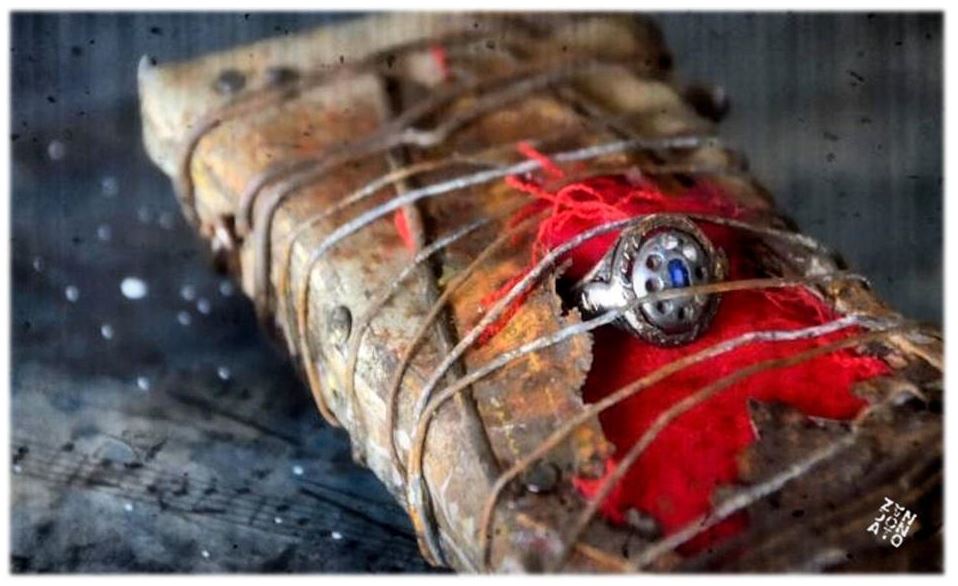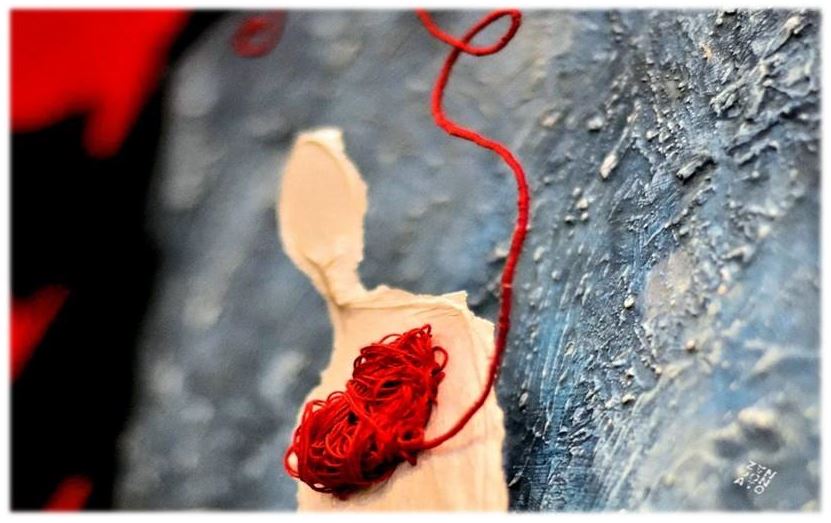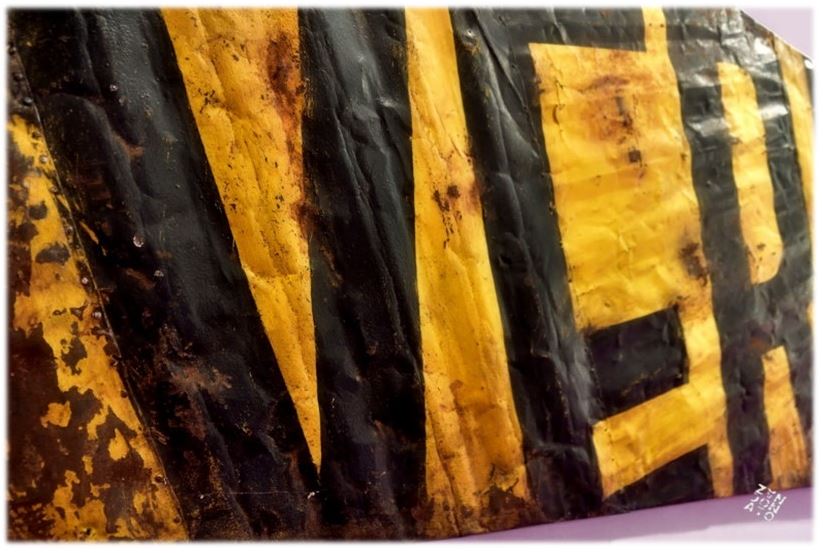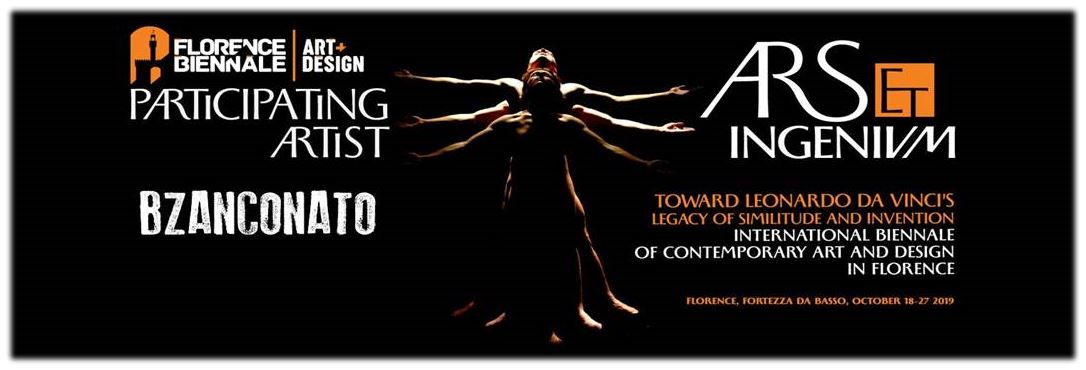My single line text
My single line text
My single line text

BZANCONATO at the XII Florence Biennale
FLORENCE (Italy), Fortezza da Basso, October 18th - 27th 2019
September 28th 2019


BZANCONATO will attend the XII Florence Biennale with a site specific installation entitled
“THE SOUND OF THE BUTTERFLY WINGS”.
With this work, the Artist takes the opportunity to present her vision of the human condition to the Italian public.
The project makes use of some of her recent works to propose an articulated narrative:
a kind of exhibition in the exhibition with a precise path that starts from the great work
placed to the bottom of the installation and that, as pointed out by the flight of the mass of butterflies,
reaches the human shaped sculpture-work.
This creates a a strong poetic and visual impact.
“THE SOUND OF THE BUTTERFLY WINGS”.
With this work, the Artist takes the opportunity to present her vision of the human condition to the Italian public.
The project makes use of some of her recent works to propose an articulated narrative:
a kind of exhibition in the exhibition with a precise path that starts from the great work
placed to the bottom of the installation and that, as pointed out by the flight of the mass of butterflies,
reaches the human shaped sculpture-work.
This creates a a strong poetic and visual impact.

"HIER IST KEIN WARUM”, the first work of this path, takes inspiration from a news about the Auschwitz camp:
in the first months of 2016, a ring and a necklace belonging to one of the victims of the camp,
were found hidden in a double bottom of a enameled cup.
“It seemed to me that love still spoke through that ring, even from a place where dignity and love
had become meaningless concepts for millions of people.” says the Artist.
The work, moreover, symbolizes the condition of the contemporary man, thrown without a reason (in the Heideggerian sense)
into the modern society that appears, to many people, as a concentration camp, where everything is already decided and pre-coded by an enormous amount of cages that limit more and more people’s personal space
(the title itself, which quotes “If this is a man” by P. Levi, means there is no why here).
But it is a small detail of the work, a ring placed over a red heart-shaped cloth, which overturns the existentialist perspective and reveals that of the Artist: love, feeling, human perspective give meaning to life and provide that energy capable of addressing even the toughest challenges. And all this through the example of the anonymous Auschwitz heroine, who was able to preserve, no matter the danger, the simulacrum of her humanity in the jewels that kept her close to her dear.
Of course, this didn’t save her life but it certainly prevented her annihilation as a human being,
that is to say, it prevented her feelings and, consequently, her human essence, from being canceled.
in the first months of 2016, a ring and a necklace belonging to one of the victims of the camp,
were found hidden in a double bottom of a enameled cup.
“It seemed to me that love still spoke through that ring, even from a place where dignity and love
had become meaningless concepts for millions of people.” says the Artist.
The work, moreover, symbolizes the condition of the contemporary man, thrown without a reason (in the Heideggerian sense)
into the modern society that appears, to many people, as a concentration camp, where everything is already decided and pre-coded by an enormous amount of cages that limit more and more people’s personal space
(the title itself, which quotes “If this is a man” by P. Levi, means there is no why here).
But it is a small detail of the work, a ring placed over a red heart-shaped cloth, which overturns the existentialist perspective and reveals that of the Artist: love, feeling, human perspective give meaning to life and provide that energy capable of addressing even the toughest challenges. And all this through the example of the anonymous Auschwitz heroine, who was able to preserve, no matter the danger, the simulacrum of her humanity in the jewels that kept her close to her dear.
Of course, this didn’t save her life but it certainly prevented her annihilation as a human being,
that is to say, it prevented her feelings and, consequently, her human essence, from being canceled.

“EQUILIBRIO” (balance), the second artwork inserted by the Artist in the installation, is even more explicit.
According to BZanconato, the human condition is “a subtle balance between wonder and abyss: we can experience strong joys but a moment later, without warning, we can fall into the deepest darkness. Similarly, just when we are on the brink of a precipice, something or someone can reach out and change our perspective.”
And it’s from the awareness of this fact that magic arises or, we could say, the opportunity given by our existence, always in balance between terror and wonder, arises (and the quote of C. Castaneda, written at the bottom of the work, offers a clear interpretative light: “the terror of being a man with the wonder of being a man”).
If on the one hand, the true existence cannot disregard death, abyss, nothingness,
on the other hand it also represents our unique and unrepeatable opportunity
to give our personal and true sense to life and to leave a mark of our passage.
According to BZanconato, the human condition is “a subtle balance between wonder and abyss: we can experience strong joys but a moment later, without warning, we can fall into the deepest darkness. Similarly, just when we are on the brink of a precipice, something or someone can reach out and change our perspective.”
And it’s from the awareness of this fact that magic arises or, we could say, the opportunity given by our existence, always in balance between terror and wonder, arises (and the quote of C. Castaneda, written at the bottom of the work, offers a clear interpretative light: “the terror of being a man with the wonder of being a man”).
If on the one hand, the true existence cannot disregard death, abyss, nothingness,
on the other hand it also represents our unique and unrepeatable opportunity
to give our personal and true sense to life and to leave a mark of our passage.

This balance, however, is extremely precarious, as shown in the following work “G.R.”.
“G.R.” is the representation of the unresolved conflict between the individual and the cage of social rules.
This contrast often becomes an undeclared-conflict between paradigms (for example, Truth and Justice on the one hand, and State Reason and Interest on the other) and the hypocrisy that revolves around these issues.
On another level, it is a reflection on the collective emotional superficiality which arises in front of facts of violence and its reasons. The Giulio Regeni case (hence the title, which takes the case initials) is an emblematic example:
like the surface of the artwork, in the time everything is “oxidized” and rust is making the traces of truth disappear,
even the one printed on the many yellow banners posted in many cities of Italy and Europe.
“G.R.” is the representation of the unresolved conflict between the individual and the cage of social rules.
This contrast often becomes an undeclared-conflict between paradigms (for example, Truth and Justice on the one hand, and State Reason and Interest on the other) and the hypocrisy that revolves around these issues.
On another level, it is a reflection on the collective emotional superficiality which arises in front of facts of violence and its reasons. The Giulio Regeni case (hence the title, which takes the case initials) is an emblematic example:
like the surface of the artwork, in the time everything is “oxidized” and rust is making the traces of truth disappear,
even the one printed on the many yellow banners posted in many cities of Italy and Europe.

But despite everything, despite the many abysses of which every existence is dotted,
despite “the terror of being a man”, there remains “the wonder of being a man”.
“DER SUCHENDE”, the final artwork, in German literally “The one who seeks”, according to the Artist,
symbolizes the true human spirit: on the one hand, awareness of the fragility and precariousness of existence;
on the other hand, clear evidence that life is the only chance available for realization
and the only opportunity to leave a sign of the passage of a human being.
This double track of the human existence is the key to reading the work (which, to say as the Artist,
is a devanture because it presents two opposite perspectives).
On one side (in particular the one on which the Artist applied her original technique of metallic collage ), there's the man who knows, like a warrior, that he must move with caution and decision in the dangerous jungle of existence, conscious that every instant and every corner can hide his end.
On the other side, there's this awareness that makes existence magical, unique and unrepeatable: a journey rich in research and discovery, in openness and enrichment, in search of its true dimension.
despite “the terror of being a man”, there remains “the wonder of being a man”.
“DER SUCHENDE”, the final artwork, in German literally “The one who seeks”, according to the Artist,
symbolizes the true human spirit: on the one hand, awareness of the fragility and precariousness of existence;
on the other hand, clear evidence that life is the only chance available for realization
and the only opportunity to leave a sign of the passage of a human being.
This double track of the human existence is the key to reading the work (which, to say as the Artist,
is a devanture because it presents two opposite perspectives).
On one side (in particular the one on which the Artist applied her original technique of metallic collage ), there's the man who knows, like a warrior, that he must move with caution and decision in the dangerous jungle of existence, conscious that every instant and every corner can hide his end.
On the other side, there's this awareness that makes existence magical, unique and unrepeatable: a journey rich in research and discovery, in openness and enrichment, in search of its true dimension.
XII Florence Biennale
October 18th – 27th 2019
Fortezza da Basso, Florence (Italy)
